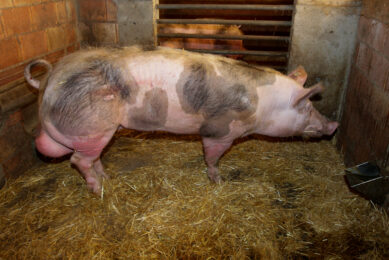Proper nutrition for gilts
I believe most nutritionists, veterinarians, and producers would readily agree with me against using gilts from the finishing floor as breeding animals. Not only for the purpose of using the right genetics, which of course is a very important consideration, but also for nutritional concerns. Keep in mind that market pigs are not fed with longevity in mind, with a notable example being dietary minerals and bone formation. So, how should we feed our gilts?
I believe most nutritionists, veterinarians, and producers would readily agree with me against using gilts from the finishing floor as breeding animals. Not only for the purpose of using the right genetics, which is, of course, a very important consideration, but also for nutritional concerns. Keep in mind that market pigs are not fed with longevity in mind, with a notable example being dietary minerals and bone formation.
So, how should we feed our gilts?
In most cases, the optimal goal for breeding gilts of a lean genotype is to reach the point of first conception at around 230 days of age, with 140 kg body weight and 22 mm P2 backfat (see Table 1). To this, please allow for genetic, management, and even regional variations. So, please use these as examples and not as recommendations!
To achieve this goal, the diets from 30 kg onwards must favour lipid deposition rather than high lean accretion rate (see Table 2). The key word here is ‘high’, because gilts should still continue to develop their muscular system, so some lean deposition is not only inevitable but even desirable! For breeding gilts, three diets are recommended (see Table 3), again allowing some flexibility for the same issues as above.
Gilts should be fed on a restricted basis, as recommended above, or according to body condition (depending on genotype). If this is not possible, gilts should be fed ad libitum up to 80-90 kg body weight, and then restricted to 70-80% of ad libitum intake until breeding. Restricted fed gilts should be flushed (ad libitum feed intake) 7-10 days before breeding. If restricted feeding is not possible during the last phase, then gilts should be fed ad libitum on a diet with 10-15% crude fiber.
High levels of Ca and P are strongly recommended to allow gilts to fully develop their skeleton and deposit enough minerals for longevity and lactation. Levels of minerals (and vitamins) usually employed in typical growing-finishing diets are not sufficient for developing gilts, so extra vitamins should be used in gilt feeds, especially those vitamins involved in reproductive functions!











